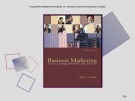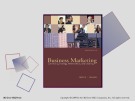
http://www.iaeme.com/IJM/index.asp 257 editor@iaeme.com
International Journal of Management (IJM)
Volume 7, Issue 7, November–December 2016, pp.257–264, Article ID: IJM_07_07_027
Available online at
http://www.iaeme.com/ijm/issues.asp?JType=IJM&VType=7&IType=7
Journal Impact Factor (2016): 8.1920 (Calculated by GISI) www.jifactor.com
ISSN Print: 0976-6502 and ISSN Online: 0976-6510
© IAEME Publication
COSMETICS BRAND ALLEGIANCE OF WOMEN
CONSUMERS
Dr. Amandeep Kahlon Virk
Assistant Professor, Budha College of Management, Ramba, Karnal
ABSTRACT
Brand allegiance is completely a new concept in consumer market which refers to commitment
towards a brand. Lots of brands are available in the market and today’s modern women prefer to
buy a brand which carries a big name, fame and style. Price and promotion is the chief P’s of
cosmetic market. Retaining customer is a challenging task for each marketer. The study
investigates the demographic factors and their association with cosmetic brand preference. In
order to analyse data and testing underling hypothesis chi-square test has been used. The findings
suggest that there is a strong association between Occupation, Income & residential location and
their brand preference and good association is found between brand name preference and price of
brand. Lakme is found to be most preferable brand among women.
Key words: Brand, Allegiance, Market, Preference and Cosmetics
Cite this Article: Dr. Amandeep Kahlon Virk, Cosmetics Brand Allegiance of Women Consumers.
International Journal of Management, 7(7), 2016, pp. 257–264.
http://www.iaeme.com/IJM/issues.asp?JType=IJM&VType=7&IType=7
1. INTRODUCTION
Branding is the practice of identifying a product or line of products by a special name or symbol. Every
product or service that exists has a name. That name is turned into a brand by infusing in it some
distinction. A brand is a name term, sign, symbol or design or a combination of those elements used to
identify a company’s goods or services to consumer and to differentiate them from the product or services
of the competitors. Brand name must be meaningful and pronounceable in all relevant languages,
otherwise firms will find that they are unable to use well known local names as they expand abroad. In
order to get success in this competitive era a brand should live in mind and heart of a customer. According
to a study by Mademoiselle Magazine, today’s females are “more likely to know what brands they want
before they go shopping” (Parks, 1997). The concept of ‘loyalty’ is not a new concept: it has been in
practice for many centuries. In past, ancient Roman Empire had often used the concept of loyalty for their
army. In 21
st
century, marketers are trying to capture market share and profits with the help of a loyal
customer base. Loyalty, in day- to-day life, implies an unselfish belief in products/services. Loyalty also
suggests monogamy: one choice above all others.















